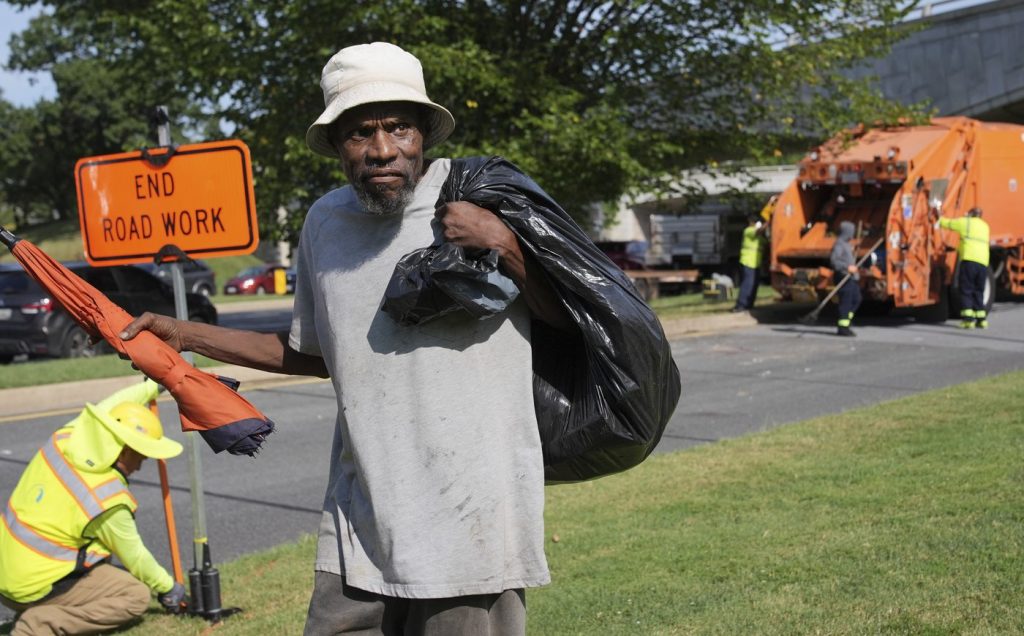In Washington, D.C., the homeless population faces increased pressure as federal and local authorities move to dismantle encampments around the city. One individual, referred to as Ms. Jay, illustrates the plight of many as she hurriedly relocates her tent across Pennsylvania Avenue, embodying the Girl Scout motto of "Be prepared" in the face of impending displacement. Having been living without a permanent home while seeking work, she shared her fear and anxiety about the law enforcement actions designed to clear the area of homeless individuals.
The initiative to reclaim parts of D.C. under President Donald Trump's "Making D.C. Safe and Beautiful Task Force" has intensified, with 800 National Guard troops deployed to assist local police in tackling crime and clearing makeshift homeless encampments. This operation follows earlier spring cleaning initiatives that disrupted various government institutions, including the U.S. Institute of Peace, which closely overlooks some of the impacted areas.
Local officials expressed concern over the aggressive approach taken by federal agents, emphasizing that they were striving to humanely manage the situation in contrast to the perceived heavy-handedness of the federal government. Episcopal Diocese of Washington leaders articulated their view that the president sees a "lawless wasteland," while they see "fellow human beings," hinting at a divergence in perspective on homelessness.
Among those affected, 61-year-old Andrew recounts an encounter with federal agents who cited his presence near the route where President Trump would be passing, prompting him to evacuate his resting spot. He, like many others, noted feeling targeted by the authorities. On the same day, 67-year-old George witnessed city workers disposing of his belongings while he clutched a few essentials in garbage bags, reflecting the harsh realities of street life.
Individuals like Jesse Wall, 43, openly express their frustration at being treated like "eyesores" and question the motives behind the clean-up operations. Another homeless man, David Beatty, expressed a sense of moral outrage, referencing the Golden Rule and feeling that the targeting of homeless individuals felt unjust. He, along with others, was given limited time to collect their possessions before heavy machinery arrived to further enforce the evacuations.
While local police have been tasked with the responsibility of clearing the encampments, expectations suggest they would execute these operations with more consideration for the individuals involved compared to federal agents. Advocacy groups like the National Homelessness Law Center indicated that people would be presented with options to either leave voluntarily or face detention, highlighting contrasting tactics between public visibility and the authorities' operational methods.
Wesley Thomas, a former homeless individual now serving as an advocate, emphasizes that homelessness encompasses a diverse range of backgrounds, showcasing that many of those displaced today have once held professional positions. Reflecting on his journey from living on the streets to now assisting others through Miriam's Kitchen, he illustrates the complex human experiences behind headlines about homelessness.
As this situation unfolds, it highlights the ongoing struggle between maintaining the aesthetic and security of Washington, D.C., and addressing the fundamental needs and dignity of its homeless population. The multilayered response from various stakeholders, including local officials, advocacy organizations, and the affected individuals themselves, illustrates the broader challenges facing urban centers in managing homelessness effectively and compassionately.










